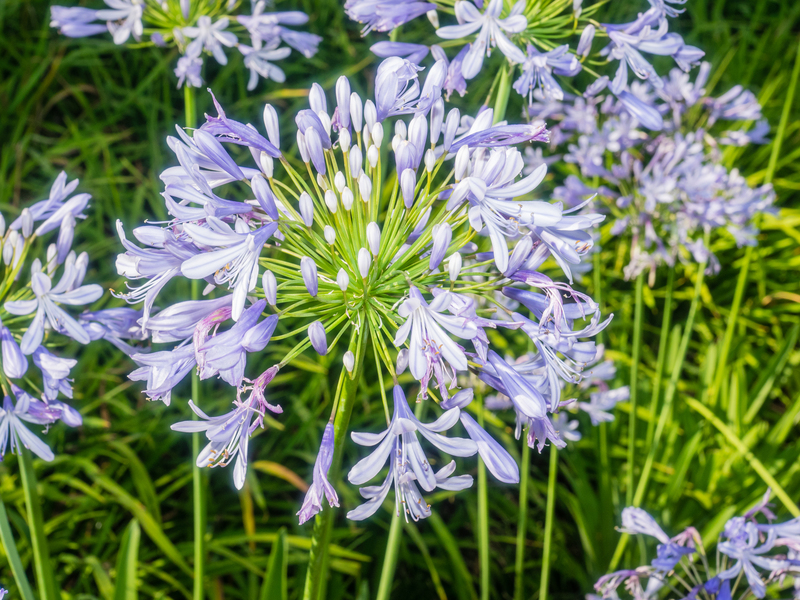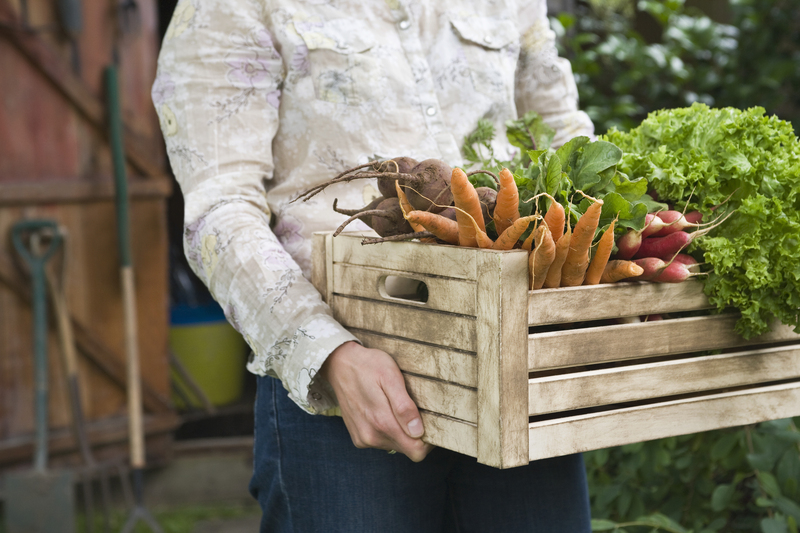Enhancing your garden with the help of man's best friend
Posted on 27/08/2025
Enhancing Your Garden With the Help of Man's Best Friend
Are you a passionate gardener and a devoted dog lover? Merging these two joys can transform your outdoor space into a true oasis--for both you and your furry companion. Enhancing your garden with the help of man's best friend is more than just allowing your pup to roam freely; it's about creating a vibrant, interactive, and sustainable ecosystem where dogs and plants thrive side by side. Read on to discover how your canine can be a wonderful gardening partner and how you can design a garden that serves the needs of all its inhabitants.

Why Involve Your Dog in Gardening?
There's a unique harmony in having a beautiful garden that's also a haven for your dog. Integrating your dog into garden enhancement efforts can:
- Promote physical activity for both dog and owner
- Reduce behavioral issues by stimulating your dog's mind
- Create safer, more suitable play zones within your property
- Encourage bonding during shared outdoor activities
- Utilize your dog's natural instincts to help keep pests at bay
From digging and sniffing to adding extra fertilization, your dog's natural tendencies can play a positive role in your horticultural adventures. With proper planning and training, your four-legged friend can contribute to a more beautiful, enjoyable, and well-maintained outdoor paradise.
Planning a Pet-Friendly Garden Space
Before letting your canine companion join you in the garden, some thoughtful preparation is required. Dog-friendly garden design involves making strategic choices about layout, fencing, plant species, and pathways. Here's how to build a harmonious environment for everyone:
Choose Safe, Non-Toxic Plants
- Research plant toxicity: Many common garden plants such as azaleas, lilies, daffodils, and foxglove are toxic to dogs. Select varieties that are safe, such as sunflowers, marigolds, snapdragons, or roses.
- Herbs that benefit both: Many herbs like rosemary, basil, and parsley are not only non-toxic but also offer culinary benefits and aromatic pleasure.
- Raised beds and containers: Protect your most delicate or valuable plants by using raised garden beds or sturdy containers out of your pup's reach.
Create Pathways and Boundaries
- Direct canine traffic: Dogs love routines. Establish clear pathways using mulch, gravel, or pavers. This encourages your dog to stick to these trails, minimizing damage to plants.
- Natural borders: Low hedges, shrubs, or decorative fencing can define beds and boundaries, preventing eager paws from tramping where they shouldn't.
- Secure fencing: Keep your dog safe from the street and other dangers with sturdy, escape-proof fences.
Plan for Play and Comfort
- Include open spaces for running and games. Grass or artificial turf can withstand frequent use and is gentle on paws.
- Add a dog-friendly water feature, like a shallow pond or kiddie pool. Not only does this offer refreshment, but it can also help cool them during hot days.
- Shade and shelter: Plant trees, install pergolas, or add doghouses to provide refuge on sunny afternoons.
How Man's Best Friend Can Help Your Garden Thrive
When it comes to enhancing your garden with your dog's help, there are plenty of innovative and practical ways your pet's presence can be advantageous:
Pest Control With a Canine Twist
- Natural deterrents: Dogs love to patrol and chase. Their mere presence and scent can scare off intruding wildlife like rabbits, squirrels, and deer that might otherwise feast on your produce or flowers.
- Sniffing out trouble: Dogs' keen noses can detect hidden nests, rodent burrows, or areas of mold and decay much faster than humans.
Assisting Garden Maintenance
- Composting help: As unlikely as it sounds, your dog can contribute to your compost bin. Organic dog waste can be composted using special pet waste composters, turning waste into nourishment for non-edible garden plants.
- Digging where you want: With positive training, your dog can assist with turning soil or digging planting holes in specific areas, making gardening less labor-intensive (and saving your prize flower beds).
Fertilization--With Caution
- Dog urine contains nitrogen, which--in moderation--can actually fertilize grass and some plants. But too much in one spot can lead to dead patches. Train your dog to use certain areas as a bathroom and dilute affected spots with water.
Affective and Enjoyment Benefits
- Having your pup in the garden makes outdoor time more enjoyable and reduces stress for you both.
- Your dog's enthusiasm for outdoor activity can motivate you to spend more time tending to your plants and landscape.
Training and Safety: Ensuring a Happy, Productive Partnership
To maximize the positive impact of gardening with man's best friend, training and supervision are crucial. Here's how to ensure safety for both your dog and your plants:
Basic Obedience Training
- Teach your dog essential commands like "Leave it," "Stay," and "Come". These will help them avoid areas or plants where they shouldn't be and encourage good garden behavior.
- Use positive reinforcement with treats or favorite toys when they behave correctly in the garden.
Supervised Exploration
- Start with short, supervised garden visits. Encourage sniffing and exploration in safe areas, and redirect as needed.
- Gradually increase time and independence as your dog demonstrates proper behavior and understanding of boundaries.
Strategic Use of Barriers
- For persistent diggers or chewers, temporary low fences or barriers around new beds can protect plants until your dog's curiosity wanes.
- Pepper deterrent sprays or motion-activated sprinklers help reinforce off-limits zones for determined pups.
Creative Garden Ideas for Dog Lovers
Looking for inspiration to blend beautiful garden design with your pup's happiness? Here are some creative ideas to try:
Doggy Play Paths
- Design a winding path through your garden, lined with dog-safe groundcovers like clover or creeping thyme, inviting your dog to explore while protecting delicate beds.
- Add softly rounded rocks or sturdy logs for climbing and agility play.
Secret Hideaways
- Create shady willow tunnels or small "dens" under large shrubs for your canine to nap, watch birds, or rest peacefully.
Sensory Zones
- Plant patches of fragrant herbs and dog-friendly ornamental grasses for sensory enrichment.
- Incorporate water misters, wind chimes, and textured surfaces for added stimulation.
Digging Pits and Toy Stations
- Dedicate an area with soft sand or earth as a designated digging pit. Bury treats or toys to encourage use.
- Anchor tug toys or place a ball storage bin for spontaneous play.
Troubleshooting Common Garden and Dog Dilemmas
Integrating your dog into your gardening routine promotes joy and harmony, but it can also present a few challenges. Here's how to address common concerns:
Preventing Plant Destruction
- Redirect dogs to designated play zones with enticing toys.
- Use sturdy barriers and mulch to protect vulnerable seedlings.
Solving Urine Spots and Trampled Turf
- Train your dog to use specific toilet areas covered with gravel or mulch that's easy to clean.
- Quickly rinse spots with water to dilute nitrogen and prevent yellow patches.
Dealing with Digging Behavior
- Provide a designated digging area, and reward your dog for using it.
- Discourage digging in unwanted areas with physical barriers or deterrents.
Addressing Allergies and Parasites
- Maintain regular flea and tick prevention, as these pests can thrive in gardens.
- Clean paws and fur after garden time to reduce pollen and allergen exposure inside the home.
Fun and Rewarding Gardening Activities with Your Dog
There are plenty of meaningful ways to involve your dog in gardening tasks. Try these shared activities for a mutually satisfying outdoor experience:
- Harvesting together: Some dogs love picking ripe vegetables such as carrots, peas, or beans (make sure they're dog-safe).
- Weed patrol: Train your dog to spot and retrieve dandelions (roots and all!) for treats.
- Compost turning: Larger dogs can help with rotating compost bins or collecting leaves and sticks.
- Nature walks and sniffari: Use your garden as part of your daily walk routine, practicing scent games and positive recall.
- Photography and observation: Take photos of your dog and garden over the seasons. You'll cherish the changing scenes and your dog's involvement.

Sustainable and Eco-Friendly Gardening with Canines
A harmonious garden enhanced by man's best friend is also one that respects the environment. Consider the following sustainable practices:
- Use organic fertilizers and pest controls to protect your dog, beneficial insects, and pollinators.
- Mulch wisely: Avoid cocoa mulch, which is toxic to dogs, and opt for cedar, pine, or straw.
- Water conservation: Choose drought-tolerant, dog-safe plants and adjust irrigation to prevent muddy areas that can be tracked inside.
- Plant a snack garden: Grow safe vegetables and fruits for dog-friendly treats, such as green beans, blueberries, or cucumbers.
- Encourage wildlife: Install birdbaths and native plants that attract bees and butterflies, while your dog naturally deters destructive critters.
Conclusion: Grow Together, Flourish Together
Enhancing your garden with the help of man's best friend isn't simply an act of creating a dog-friendly landscape. It's about forging a deeper relationship with your pet, cultivating nature, and designing a purposeful sanctuary where all members--human and canine--can bloom together. With careful planning, a little creative design, and the right training, both your plants and your pooch will reap the benefits of this natural partnership.
So, roll up your sleeves, leash up your furry friend, and get ready to discover the endless possibilities that come when you garden side by side with your loyal companion. Your oasis awaits, shaped and enlivened by the joyful spirit of man's best friend.



